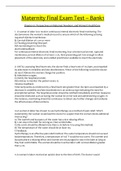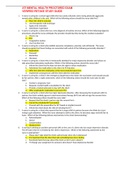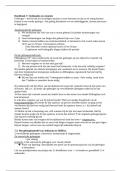Samenvatting
Uitgebreide Samenvatting van de Aantekeningen van het vak 'Governance and Politics of Social Problems' (Cijfer 8,5)
Samenvatting van alle hoorcolleges van het vak GPSP (2023/2024) in het Engels geschreven. Er wordt gebruik gemaakt van voorbeelden, afbeeldingen en referenties naar de verplicht te lezen artikelen.
[Meer zien]














